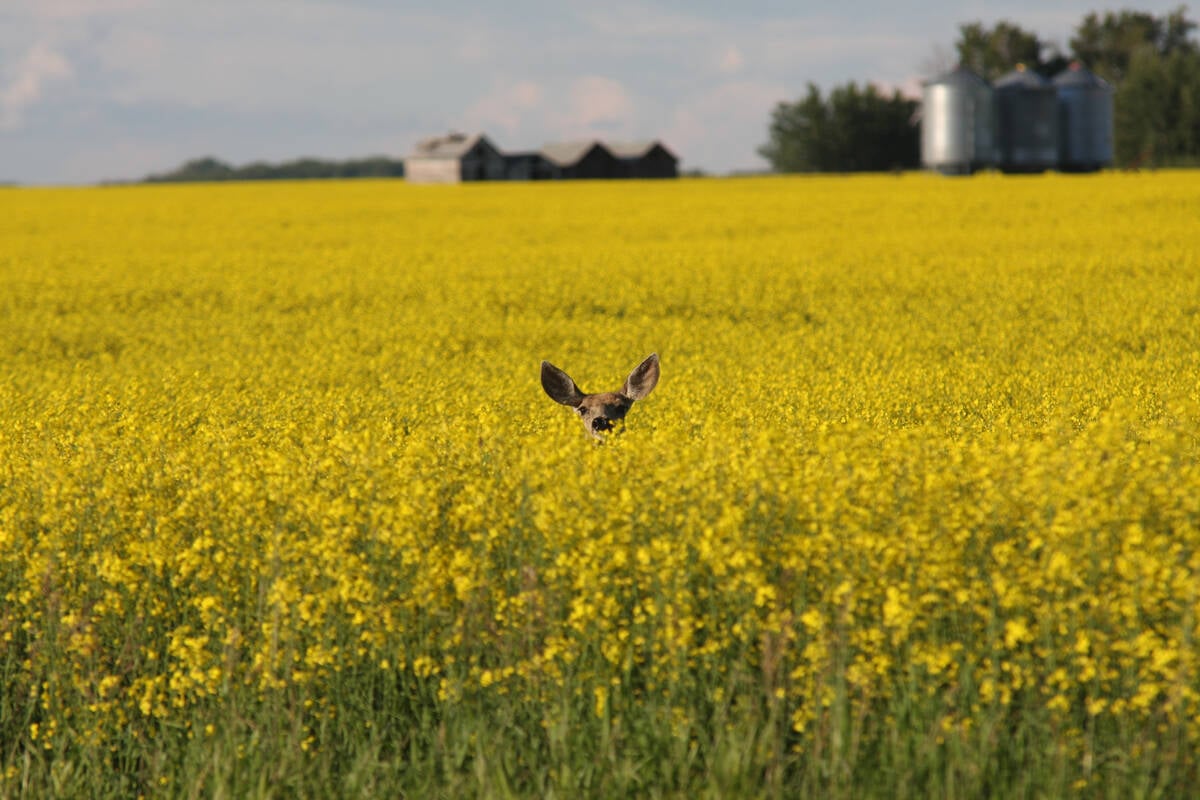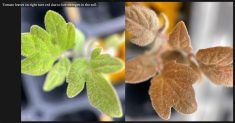MAYFAIR, Sask. – The Saskat-chewan government admits it is responsible for the hundreds of thousands of deer ravaging swathed crops and hay bales this year.
It also concedes producers are paying the price and it accepts the problem is beyond farmers’ control.
But farmers shouldn’t look to the government for compensation.
“We do sympathize with the landowners. It isn’t fair that they shoulder the blame,” said provincial environment minister Lorne Scott.
He added the government, hunters and farmers hope to have a compensation program ready for next year.
Read Also

Drones now used to assess wildlife crop damage in Saskatchewan
Wildlife damage in Saskatchewan crops is now assessed by drones and artificial intelligence.
But for this year, farmers will not be compensated for damages caused by deer, which the government estimates number more than 300,000. Many farmers consider that estimate to be low.
“We do not have a specific fund, unfortunately. We have gone around the table a number of times and we just don’t have the funds,” Scott said.
That doesn’t sit well with farmers like Don Voss of Spiritwood in northwestern Saskatchewan. He has 260 acres of barley and oats laying in swaths and being eaten by hundreds of white-tailed deer.
“It’s just unbelievable. It’s costing us tens of thousands of dollars each, and we’re supposed to absorb that,” he said. “It’s just terribly unfair.”
He said the government could find money to pay compensation for this year’s damage, but isn’t bothering because it doesn’t need to treat farmers fairly.
Power lacking
“Farmers, politically, are powerless. We’re only a handful of people and even if we vote en masse we can’t elect anybody any more,” Voss said. “So he can dump on us and what the hell can we do?”
Mayfair producer Morris Prescesky said he can’t understand how the provincial government can refuse responsibility. The deer are technically provincial government property and the government prevents farmers from killing them without special permits.
This year more than 196,000 acres of crops from last season are still on the fields because of late seeding and a wet fall. That’s coupled with a dramatic rise in the deer population.
Last autumn heavy snow fell in November, followed by freezing rains and extremely cold weather. This prevented deer from scratching through the top snow layer to get to their usual food sources, pushing them into farmers’ fields and hay storage areas.
Since then the winter has continued cold, forcing deer to eat more to survive. The two areas most affected in Saskatchewan are the southeast and northwest.
Some local producers estimate they lose about $100 per day in hay to the deer.
Scott and wildlife officials point out they have spent about $360,000 on prevention programs, but it has not been enough.
Kevin Callele of the provincial wildlife department said a provincial plan to control wildlife damage must include population reduction, damage prevention and long-term compensation.
But in the meantime, some farmers are losing patience. Prescesky and Voss say a few have begun shooting deer to protect their crops.
But Scott said shooting deer is illegal without a permit. “We cannot take the law into our own hands,” he said.
“If there’s any shining light in this thing, I think everybody has come to agreement that there is no one single solution to this problem,” Callele said. “Even if we have a compensation program in place, that itself won’t solve the grain damage situation.”















